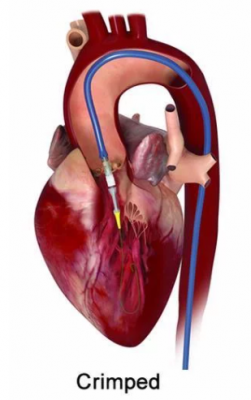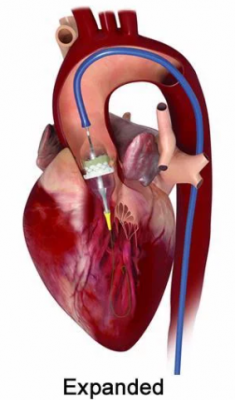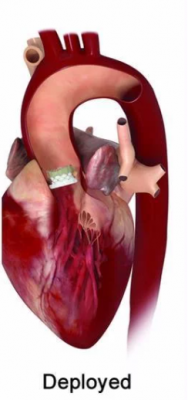The aortic valve controls blood flow to the heart. This valve is made of three layers of tissue called leaflets that open when the blood presses on them. When these sheets harden and lose their flexibility, they no longer open or close completely. This causes the valve to narrow.
This narrows and restricts blood flow. As a result, less oxygen-carrying blood flows from the lungs to the brain and the rest of the body.
TAVR
Since the introduction of the Transatheter Aortic Valve (TAVI) in humans by Alan Creeber in 2002, This new method is known as the treatment of choice for severe aortic stenosis in inoperable patients and as a rational alternative to conventional surgical aortic valve and is an alternative for patients with moderate to high surgical risk.
TAVR is a minimally invasive procedure that replaces the aortic valve without opening the chest to reach the heart. Patients undergoing TAVR surgery usually have a better recovery time and experience less pain. In general, how quickly the patient recovers and returns to his or her daily routine depends on the individual’s overall state of health.
TAVR method
An alternative aortic valve is designed to restore proper function to the patient’s aortic valve. It consists of a wire valve frame and layers of animal tissue (bovine).
To reach the heart, the doctor makes a small incision in an artery or blood vessel, often in the groin, and inserts a small hollow tube called a catheter.

The prosthetic valve is compressed and placed on the catheter. The catheter and compressed valve travel through a large blood vessel until they reach the patient’s aortic valve.

The doctor expands the prosthetic valve and removes the flaps from the aortic valve. The doctor uses special X-ray equipment to guide the position and insert the new valve.

The new valve starts working immediately and restores healthy blood flow. The doctor then removes the catheter and closes the incision.
According to research on this method for the elderly and people at high risk, the side effects of the device were very rare. The authors reported 98.1% success rate during the operation. (Successful vascular access, device delivery, and Lotus valve deployment, and successful delivery system recovery). Valve replacement was performed in 29% of patients and was successful in 99.0%. Valve dislocation and implantation of two valves occurred in only five cases (0.5%)
The rate of cerebrovascular accidents and major vascular complications were 0.3% and 3.4%, respectively. The latter are well in line with the rates seen in the latest TAVI series
The valve performance was extremely good
However, such a desirable performance is associated with an unaffordable price.

